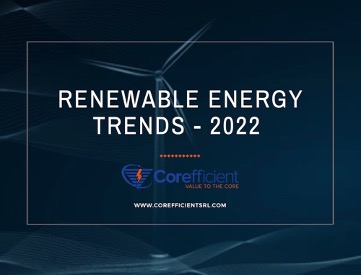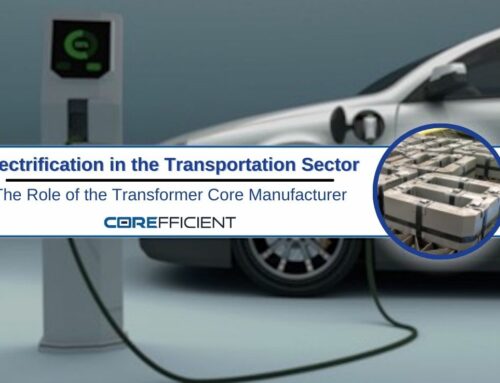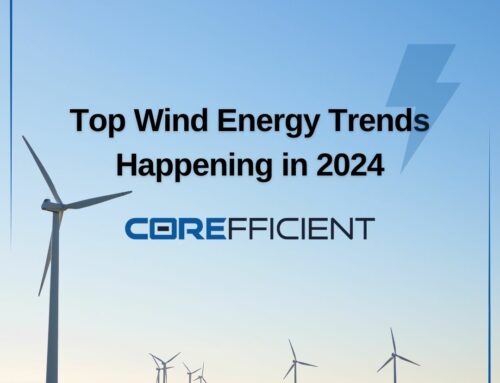
Fossil Fuels. A finite energy resource that is far from being included in renewable energy trends. When we hear or read about it, it often reminds us that they have impacted climate change far more than the overconsumption of goods and plastic pollution problems combined. At the rate our world is burning fossil fuels to generate power, manufacture goods, power buildings, and support mass transportation – do we even stand a chance to save our children’s future by adopting sustainable options like renewable energy?
Through the years, global nations have been using renewable energy as their energy supply. The switch to energy efficiency and renewable technologies has significantly impacted economic benefits, energy security, and climate change. That is why here at Corefficient, we are consistently on the lookout for product innovation, especially under sustainable advantages of the electrical transformer supply chain. Read further for the freshest finds on renewable energy trends in 2022.
Artificial Intelligence
The energy grid is a complex infrastructure requiring quick real-time decisions, where big data and AI algorithms allow for practicality. Exceeding grid analytics and control, AI’s applications in renewables comprise power consumption foreseeing and predictive upkeep of renewable energy supplies. It further helps the internet of energy applications that foreshadow grid capacity statuses and carry out transitory self-reliant trading and pricing. With inventions in cloud computing, virtual power plants (VPP) increase the power generation from utilities. Plus, startups use data analytics and machine learning for designing and examining renewable energy models.
Green Hydrogen
In the past decade, renewable energy trends and fuel cell developments have pushed the shift to green hydrogen. Hydrogen gas has the highest energy mass of all fuels and produces near-zero greenhouse gas emissions (GHG). However, most hydrogen gets derived from non-renewable sources like grey and brown hydrogen. While purer, it also struggles with the issues of low energy conversion effectiveness of fuel cells and challenges in transit. For these reasons, the progress in green hydrogen focuses on improving hydrogen storage, transport, and distribution.
Hydropower
Hydropower is the energy gained from moving water. Hydropower energy is predictable and, hence, more reliable than solar and wind. Additionally, hydroelectric dams and ocean-based energy generated from tides, currents, and waves present high-energy density while minimizing dependency on conventional sources. The innovations in these renewable starting points focus on energy converters and component improvements for harvesting energy more efficiently. Smallholder hydroelectric dams and tidal barrages enable decentralized energy generation within hydropower. Ocean thermal energy conversion (OETC) harnesses power through the warm inclination produced in the middle of the surface and water deep down. A small number of startups, too, are changing the saltiness gradient developed due to the osmotic pressure variance between seawater and river into usable energy.

The Internet of Energy (IoT) and Blockchain
Energy startups use blockchain technology to advance trusted dealings in the renewable energy sector. For example, intelligent agreements drive peer-to-peer (P2P) electricity trading for transactive energy. Grids are exposed to cyber threats, and blockchain gets used to encrypt the data associated with grid operations and monitoring. Through data encryption, blockchain facilitates digital transactions. Additionally, it allows regulators to access data for regulatory compliance easily. Renewable energy providers also use blockchain to track the grid materials’ chain of custody.
Bioenergy and Photovoltaics or PV (Wind Energy)
Bioenergy makes up a type of renewable energy taken from biomass origins. Liquid biofuels with standards like gasoline are straight blended for use in means of transport. To reach this quality, companies improve biofuel processes and upgrade techniques. Most biofuel conversion processes like hydrothermal liquefaction (HTL), pyrolysis, plasma technology, pulverization, and gasification use thermal conversion to obtain biofuels. Also, they upgrade technique usage like cryogenic, hydrate, in-situ, and membrane separation in sulfur and nitrogen content removal.

Likewise, the fermentation process produces bioethanol which is easy to blend directly with gasoline. Fermentation can also convert waste, food grains, and plants into bioethanol with the provision of feedstock variance. Alternately, energy-dense feedstocks follow optimum fuel standards. Accordingly, startups and big companies consider algal and microalgal feedstocks for use in the conversion, as mentioned in earlier processes.
Despite being one of the historic energy resources, the fast-developing disposition of the wind energy category makes it one of the most significant sources. It is consistently in the renewable energy trends portfolio. Startups are thinking up offshore and airborne wind turbines to reduce the demand for land-based wind energy. Innovations in this field often integrate with other energy sources such as floating wind turbines, solar, or tidal power. To further improve efficiency, there are constant advances in the aerodynamic designs of the blades. Startups are also developing efficient generators and turbines for high energy conversion. The sustainability of blade material is one of the industry’s challenges today. To address that, startups are creating bladeless technologies and recycling thermoplastic materials to manufacture blades.

Grid Integration
Grid integration technologies primarily include transmission, issuance, and balancing renewable energy. Despite these technologies, grid stabilization is a huge challenge due to intermittent energy usage. An increase in renewable energy generation is often far from demand centers, resulting in transmission and distribution losses by leveraging energy-efficient grid electronic technologies such as Gallium Nitride (GaN) and Silicon Carbide (SiC) semiconductors to overcome this. Microcontroller-based solutions solve the frequency and voltage fluctuation challenge due to variable renewable energy generation. Grid-to-Vehicle (G2V) solutions hold the vehicle as a storage unit, while Vehicle-to-Grid (V2G) technology empowers stabilization of the grid during peak hours. Thereby, both the energy and transportation industries benefit.
Corefficient is staying ahead of energy innovation to adapt only the best transformer core manufacturing that delivers value for generations. We achieve this by staying current with the newest trends and developments worldwide. We devise a competitive edge for our customers through non-stop creation and improvements in our electrical transformer cores. We address all the developmental challenges by ensuring we have the finest cutting-edge equipment and expertise.
More About Corefficient
Our modern, ISO-9001-certified facility in Monterey, Mexico, has a team of adept specialists who work steadily to bring you exceptional assistance in North America and beyond.
Since 2016, Corefficient has strived to grow and provide high-performance electrical transformer cores with superior customer service. We deliver improved core efficiency based on material selection, geometries, and manufacturing processes. Check out our transformer core services!
Visit our website or reach out to our Corefficient sales engineer today at 1 (704) 236-2510.





